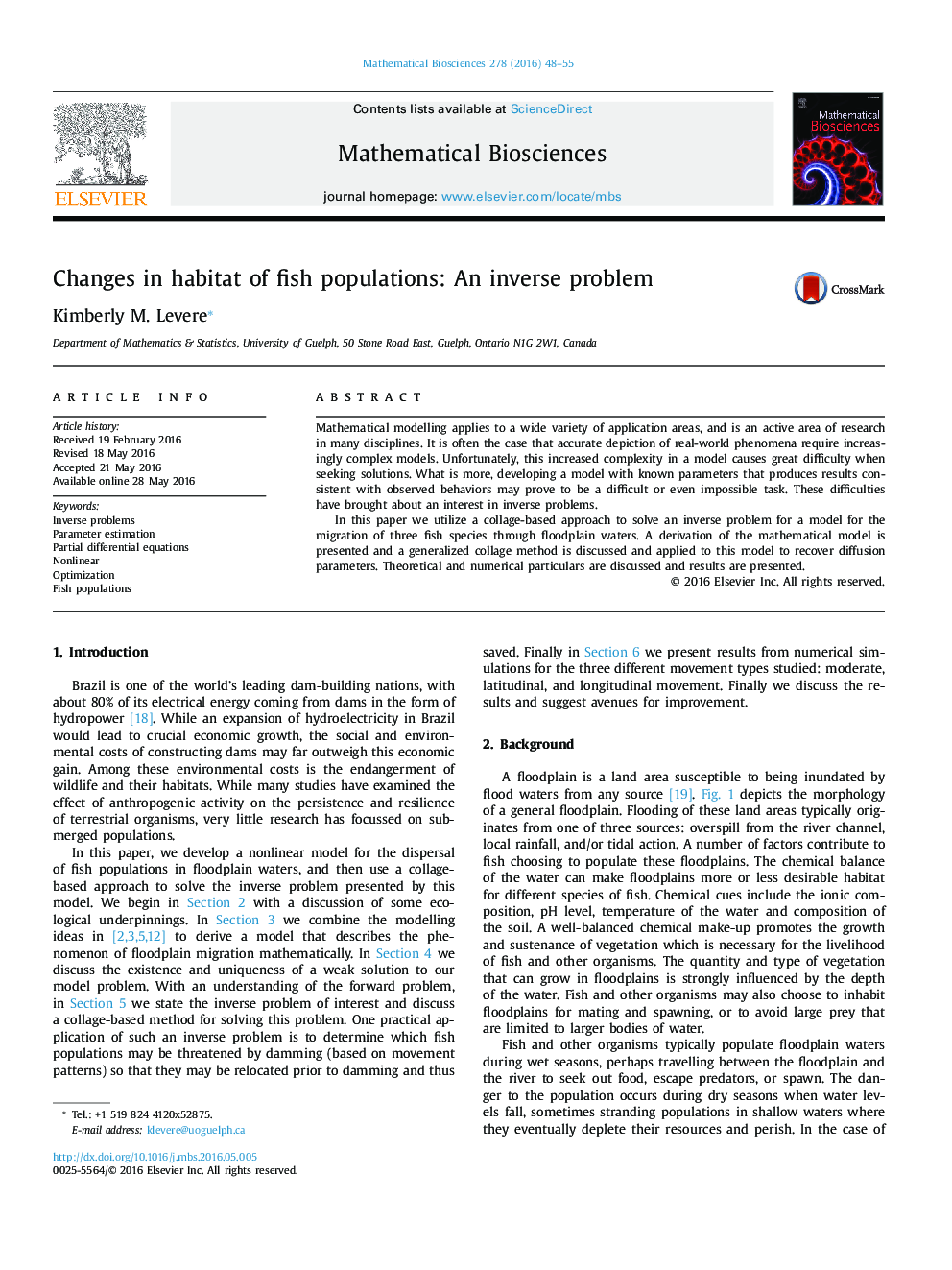| Article ID | Journal | Published Year | Pages | File Type |
|---|---|---|---|---|
| 4499875 | Mathematical Biosciences | 2016 | 8 Pages |
•A collage-based approach is used to solve an inverse problem for a fish population model.•A non-linear parabolic partial differential equation model is used to model the changes in habitat of fish in a dammed river in Brazil.•Numerical methods are used to develop and implement several example problems to recover the diffusion coefficient in the model.•Variations in data collection is simulated and the robustness of the model is shown even with noisy data.
Mathematical modelling applies to a wide variety of application areas, and is an active area of research in many disciplines. It is often the case that accurate depiction of real-world phenomena require increasingly complex models. Unfortunately, this increased complexity in a model causes great difficulty when seeking solutions. What is more, developing a model with known parameters that produces results consistent with observed behaviors may prove to be a difficult or even impossible task. These difficulties have brought about an interest in inverse problems.In this paper we utilize a collage-based approach to solve an inverse problem for a model for the migration of three fish species through floodplain waters. A derivation of the mathematical model is presented and a generalized collage method is discussed and applied to this model to recover diffusion parameters. Theoretical and numerical particulars are discussed and results are presented.
